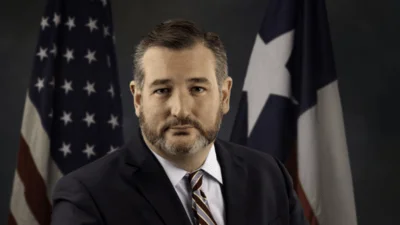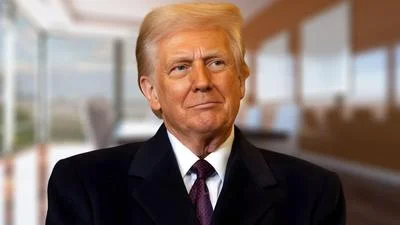The Congressional Record is a unique source of public documentation. It started in 1873, documenting nearly all the major and minor policies being discussed and debated.
“THE TRANSPORTATION EQUITY ACT FOR THE 21ST CENTURY” mentioning the U.S. Dept. of Transportation was published in the Senate section on pages S5762-S5764 on June 9, 1998.
The publication is reproduced in full below:
THE TRANSPORTATION EQUITY ACT FOR THE 21ST CENTURY
Mr. CHAFEE. Mr. President, I rise today to say a few words about the Transportation Equity Act for the 21st Century, otherwise known as the ISTEA reauthorization legislation. This was passed by the House and Senate on May 22, and the President will sign this historic legislation into law later this afternoon.
In the rush to finish the conference before the Memorial Day recess--
and I know the Chair remembers well the frantic hours that were taking place then--and during our subsequent efforts on the technical corrections bill to this overall legislation, I did not have an opportunity to speak about what was accomplished in this important bill. I also want to take this chance to thank the many people who were involved in the effort.
First, a word about the legislation. It is the result of over 2 years of hard work and careful negotiation. But I think the final product is better for the extra time and effort that was put into it.
This legislation builds upon the landmark achievements of the so-
called first ISTEA legislation, which stands for Intermodal Surface Transportation Efficiency Act. That was in 1991. Senator Moynihan of New York was chairman of our committee at the time, the Environment and Public Works Committee, and was, I think it is fair to say, the principal author of that landmark legislation in 1991.
Now, how is this bill historic? And how is it different from the 1991 legislation?
First, and most obvious, ISTEA II, or sometimes called the Transportation Equity Act for the 21st Century, authorizes a record amount of funding for surface transportation: almost $218 billion for highway and transit programs over the next 6 years.
Of this amount, almost $174 billion will be for highways--that includes bridges, obviously--$3 billion is for highway safety programs, and $41 billion is for transit programs.
Now, $205 billion of these funds are authorized from the highway trust fund, and $13 billion from the general fund. In total, the funds provided in the conference report represent a 40 percent increase over the last so-called ISTEA legislation--40 percent increase.
We will provide these record funding levels in the funding guarantee within a balanced budget. I think that is terribly important to remember, Mr. President. We are not increasing the Federal deficit, despite some of the statements that have been made in the various news media.
For achieving these record funding levels for the highway program, Senators Byrd, Gramm, Warner and Baucus deserve special recognition, as well as Congressmen Shuster and Oberstar from the House. All of those Members fought long and hard to ensure transportation would receive substantial increases over the original ISTEA legislation.
I know that the sums in this bill are large, and the press reports sometimes imply we spent too much, but I think we have to put all this into context.
The bill authorizes, indeed, $218 billion. And I must say, that is a lot of money, as we all recognize. It is over 6 years. As I said, this represents a large increase over ISTEA I of 1991.
However, and I think this is an important point, only about 30 to 40 percent of the total projected spending for highways and transit by all levels of government is encompassed in this legislation. People come up to me and say, well, isn't that a lot of money to be spending on transportation--that is, highways, bridges and transit--over the 6 years? Yes, it is a lot of money, but you have to realize it only represents about 30 to 40 percent of the total projected spending that will be done.
Where does the other spending come from? It comes from counties, it comes from States, it comes from cities that are doing things on their own.
In addition to record authorization levels, this legislation made significant changes to the way we budget for transportation at the Federal level. This legislation changed the budgetary treatment of the highway trust fund following the model set forth in a bill first introduced by Senator Bond, which I was pleased to cosponsor and work on with him, the so-called Bond-Chafee legislation.
This bill ensures that all Federal gas tax revenues deposited into the highway trust fund are spent on transportation programs. In effect, this bill reestablishes the linkage between the highway trust fund taxes and transportation spending that was envisioned when the highway trust fund was created. If future revenues to the highway trust fund increase, then under this legislation the highway spending will increase; and, of course, it works the other way, likewise. If the amount going into the highway trust fund from the various taxes--
principally the Federal tax on gasoline--decreases, then highway spending, likewise, will decrease.
Now, using Congressional Budget Office projections, $198 billion of the total funding for highway and transit programs will be guaranteed under the new budget mechanism we have. Of the $198 billion, $162 billion is for highway and highway safety programs and $36 billion is for transit programs. It is important to note that this historic change which reestablishes the linkage between the trust fund moneys and trust fund spending was all accomplished within the balanced budget framework. We will keep the highway trust fund on budget as part of a unified budget and we will offset the increased spending with spending reductions in other programs.
I want to thank Senator Bond for his tireless work on the so-called Bond-Chafee proposal, which provides the underlying foundation for the budget reforms we implemented in this legislation. I thank the cosponsors of the Bond-Chafee proposal for their input. I also want to thank Senator Domenici and his staff for their work throughout the year and for their help in crafting the final budget mechanism that will become law later this afternoon.
I believe the original ISTEA was a landmark piece of legislation. I have said that many, many times. However, it is true that in the 1991 legislation there were some shortcomings, particularly for the so-
called donor States. These were the States that put in substantially more into the trust fund than they got back. The original ISTEA established a 90 percent minimum allocation program which was intended to guarantee that each State at least got back 90 percent of what that State put into the trust fund. The problem was that it didn't work. The 90 percent only applied to some of the programs and wasn't structured mathematically to achieve its goals. The old minimum allocation calculation applied to fewer than 80 percent of the programs, leaving some States to receive a percentage share that was equal to 70 to 80 percent of their share of contributions. In other words, a program that was designed to make sure that every State got back at least 90 percent failed. Indeed, some States were left with between 70 plus up to 80 cents back on the dollars as opposed to the 90 cents.
In this legislation, thanks to the leadership of Senator Warner and others in the Senate, tremendous efforts were made to guarantee that each State would get back--at least originally, we sought 92 percent. We weren't able to achieve that under the formula, but we did come up so that every State got back 90.5 cents for every dollar that State put into the trust fund, at least. So the donor States were put in far better shape than they previously had been under the old former legislation.
Other members of the Environment and Public Works Committee who played a key role in achieving this result were all very, very helpful. In addition, we had Senators who were not on the committee who were very anxious about the program. Senators Abraham, Lugar, Coats, Mack, Graham, and Levin were diligent in their efforts to see that their States got back at least the 90.5 cents.
Another area where ISTEA broke with the past is how priority projects, otherwise known as demonstration projects, are treated. I realize that these projects are viewed by some just like the demonstration projects of the past. However, I think the way we dealt with them in this legislation was somewhat different. First, the special projects, demonstration projects in this bill, did receive an amount of attention that was far out of proportion to their dollar significance. The high priority projects similar to those in ISTEA I only received 5 percent of the total. If you read the newspapers, you would think they were consuming 40 to 50 percent of the total. Not at all. These special projects received 5 percent of the total. In the original bill, priority projects were treated as mandatory spending, exempt from the appropriations process. In this legislation, priority projects are discretionary spending, subject to the obligation limitations in the appropriation process.
Third, under the former bill, ISTEA I, priority projects were always funded at 100 percent of their authorized level. In other words, priority projects were not reduced when the total authorization went down. However, in this legislation, these projects were treated as the same as the other core projects, taking their share of any reduction caused by a shortfall in final appropriations. If the total amount goes down, the special projects go down, likewise.
We made a sincere commitment to safety in this legislation, recognizing that more than 40,000 Americans die and 3 million are injured in highway crashes every single year in our country. This is a tragic effect for millions of American families. We recognized these statistics and included a variety of initiatives to address this terrible problem. We increased the Federal commitment to improve roadway safety, providing more than $6.6 billion for highway safety programs; $3.6 billion of that will be available for safety construction, efforts aimed at eliminating road hazards and improving safety at rail-highway grade crossings. We provided a little over half a billion in incentives to States to promote seatbelt use. Seatbelt usage is by far the most important step that vehicle occupants can take to protect themselves in the event of a crash. We provided half a billion in incentive programs to encourage States to adopt tough .08 blood alcohol concentration standards. This is something that Senators Lautenberg and DeWine worked very, very hard on. I want to recognize their efforts.
Under the category of innovation, we recognized we must maintain the strength of the transportation system we have in place but we have to provide new tools to address new problems and supply new solutions. We have to look at ways to finance our substantial infrastructure needs, evaluating the potential of new methods to design and build infrastructure more efficiently so we have innovative financing provisions, the so-called Transportation Infrastructure Financing and Innovation Act. That is a mouthful. It is also known TIFIA. I want to thank Senators Graham and Moynihan for their leadership on that important provision.
As far as intelligent transportation systems go, this is a forward-
looking initiative. We have to make the most efficient use of our existing highways. We provide new options for transportation planners to address safety and capacity concerns. The objective is to move more vehicles in a safer fashion over the same amount of highway that exists--not expand the highways, just move more vehicles along the existing highways in a safe fashion.
The environment received great attention in our legislation, and, I might say, so did ISTEA I in 1991. But we continued that. Indeed, we increased funding for the Congestion Mitigation and Air Quality Program. In other words, where congestion arises, we took efforts to mitigate those problems and the reflections that that congestion has upon our air quality.
We boosted funding for the Transportation Enhancements Program. We increased that by 38 percent over the prior legislation of 1991. So States can use these funds for what we call transportation enhancements, such as bicycle and pedestrian facilities and historic or environmental preservation projects.
We initiated a wetlands banking system to mitigate transportation's effect on wetlands. When we build new roads, all too often wetlands are affected. We want to promote wetlands restoration. We did that by making wetlands restoration a profitable private enterprise.
We reauthorized and amended the Aquatic Resources Trust Fund, which provides about $350 million annually to States throughout the Nation for sport fish restoration and boat safety programs.
So these are some of the things that we did. We had environmental streamlining. We held the line on administrative expenses. We added a design-build system for contracting. Current law doesn't allow the use of the so-called design-build concept in highway construction. The design-build concept combines the design and construction phases of a highway project, allowing projects to be built faster and at less cost to the taxpayer.
Mr. President, I will conclude by recognizing the tremendous efforts put forth in this legislation by the staffs and by the Department of Transportation. I want to thank Secretary Slater and Federal Highway Administrator Wykle for their time and effort on this bill and for making the full resources of the Department available to us. From the Department of Transportation, I thank specifically Jack Basso, Nadine Hamilton, Bud Wright and his staff, Tom Weeks, Bruce Swinford, Roger Mingo, Dedra Goodman, Frank Calhoun and his staff, Patricia Doersch, Bryan Grote, and David Seltzer. These individuals, particularly on the formula runs, were tremendously helpful.
I thank Secretary Slater for allowing Cheryle Tucker from the Federal Highway Administration to be detailed to our committee for 16 months to help us on this. I thank all the conferees from the Environment and Public Works Committee; all 18 were conferees. I think that was very helpful to me, and I believe it worked well. These members took hours from their busy schedules to listen to summaries of what was taking place and offered suggestions. I thank the chairman of the subcommittee, Senator Warner, and the ranking member, Senator Baucus, for their efforts in getting this legislation up to the full committee.
Lastly, I would like to recognize the efforts of the Senate staff who worked so long and hard. Of course, I thank every single one of them. Particularly, I recognize the work of Jimmie Powell, who was just tireless, and a series of others who did such a good job. I am going to run over the names of some of those who worked on the reauthorization that I was particularly close with. Chris Hessler; Dan Corbett, of course, who was tireless and always present; Ann Loomis; Tom Sliter; Kathy Ruffalo, with Senator Baucus; Chris Russell; Gary Smith; Tracy Henke, with Senator Bond; Jason Rupp; Doug Benevento, with Senator Allard; Abigail Kinnison with the Environment and Public Works Committee; Al Dahlberg with the Environment and Public Works Committee; Linda Willard with the Environment and Public Works Committee; Ellen Stein with Senator Warner; Chad Bradley with Senator Inhofe; Chris Jahn with Senator Thomas; Gerry Gilligan with Senator Sessions; Rick Dearborn with Senator Sessions; Arnold Kupferman with Senator Moynihan; Polly Trottenberg with Senator Moynihan; Liz O'Donoghue with Senator Lautenberg; Kirsten Beronio with Senator Lautenberg; Drew Willison with Senator Reid; Melissa White with Senator Graham; Tim Hess with Senator Graham; Joyce Rechtscheffen with Senator Lieberman; Christopher Prins with Senator Lieberman; Rob Alexander with Senator Boxer; Joshua Shenkmen with Senator Wyden; Howard Menell with the Banking, Housing, and Urban Affairs; Peggy Kuhn with the Banking, Housing, and Urban Affairs; Joe Mondello with the Banking, Housing, and Urban Affairs; Loretta Garrison with the Banking, Housing, and Urban Affairs; Bill Hoagland with the Budget Committee; Brian Riley with the Budget Committee; Austin Smythe with the Budget Committee; Mitch Warren with the Budget Committee; Ann Begeman with the Commerce, Science and Transportation Committee; Charlotte Casey with the Commerce, Science and Transportation Committee; Clyde Hart with the Commerce, Science and Transportation Committee; Bob Greenawalt with Senator Chafee; Ashley Miller with Senator Roth; Keith Hennessey with Senator Lott; Carl Biersak with Senator Lott; Janine Johnson with Senate Legislative Counsel; Peter Rogoff with Senator Byrd; Pam Sellers with Senator Coats; Steve McMilin with Senator Gramm; and Dave Russell with Senator Stevens.
They all were tremendous, and I feel bad if I left out the names of any of them. So it goes, Mr. President, without the help of these individuals, we plain could not have gotten this legislation accomplished. So I thank every one of them.
I thank the Chair.
Mr. President, I yield the floor.
____________________








